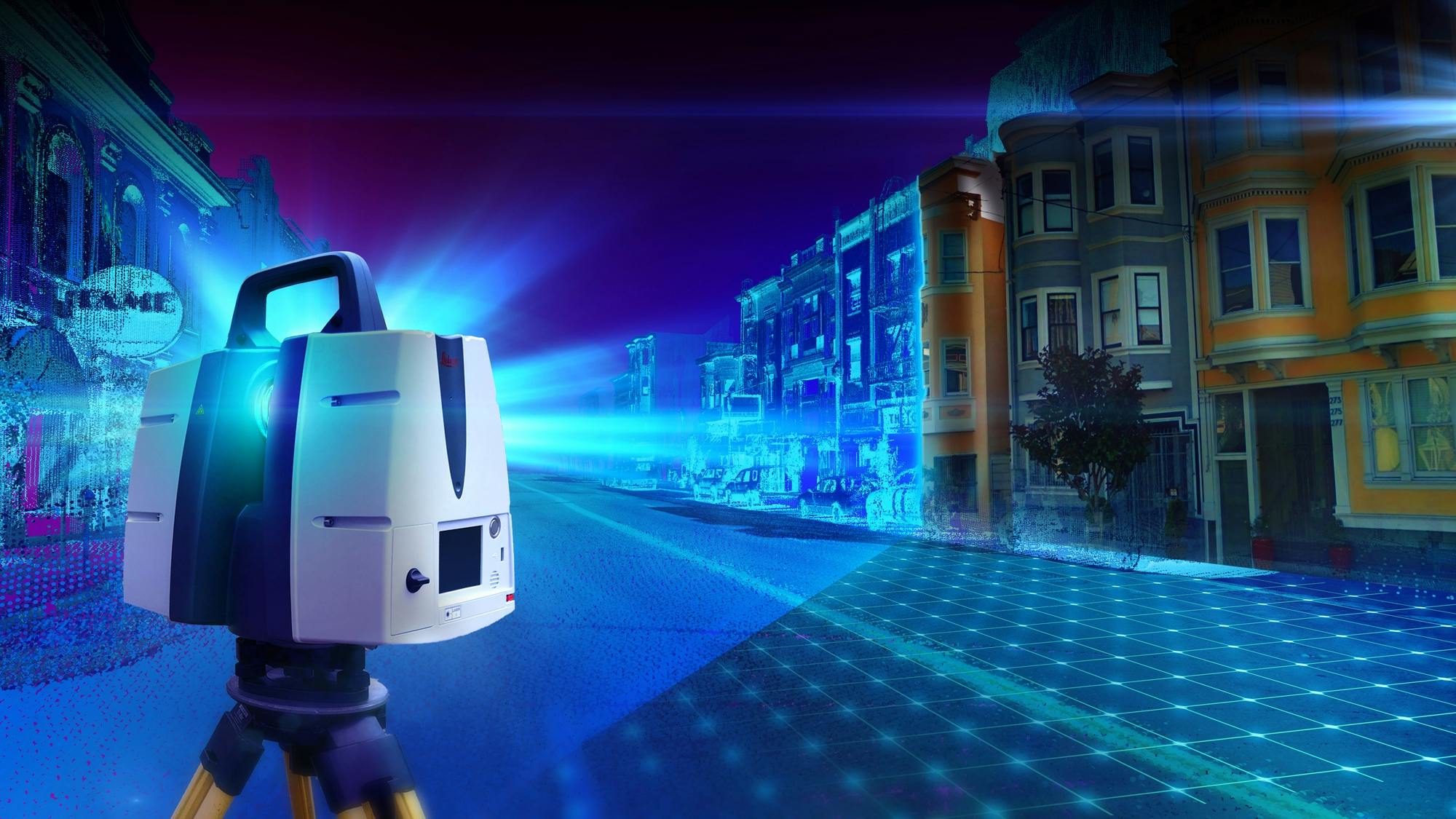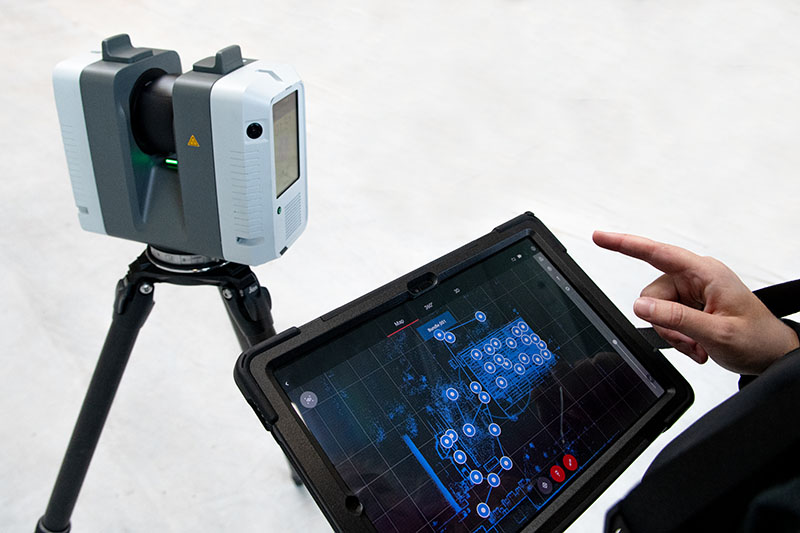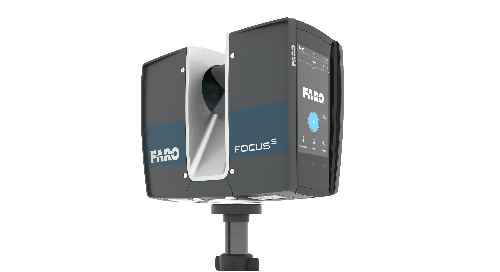Essential Facts About 3D Scanning for Projects
Wiki Article
Enhancing Production Processes: The Impact of 3D Laser Scanning on Quality Assurance
3D laser scanning innovation is changing top quality control in manufacturing. By supplying exact measurements and high-resolution information, it enables manufacturers to determine deviations from specs effortlessly. This improvement not just improves evaluation processes yet also boosts operational effectiveness. 3D Scanning. Nevertheless, the application of this innovation comes with its very own set of challenges. Exploring these facets discloses the wider implications for industries and the future landscape of manufacturing
Comprehending 3D Laser Scanning Technology
Although 3D laser scanning innovation has progressed significantly over the last few years, its essential principle remains simple: catching the precise geometry of items making use of laser light beams. This technology utilizes laser light to gauge distances in between the scanner and different factors on an item's surface area. The information gathered is then processed to produce a detailed 3D model, precisely reflecting the measurements and shapes of the checked object.Usually, 3D laser scanners can be categorized into 2 main kinds: contact and non-contact scanners. Get in touch with scanners physically touch the object to gather measurements, whereas non-contact scanners use laser light beams to capture data from a range. The adaptability of this innovation enables its application across numerous markets, consisting of building and construction, manufacturing, and style. Its capacity to generate high-resolution models helps with quality control, reverse design, and rapid prototyping, inevitably enhancing design precision and efficiency in manufacturing procedures.
Advantages of 3D Laser Scanning in Manufacturing
As manufacturers look for to boost performance and precision in their processes, the benefits of 3D laser scanning have ended up being progressively evident. This cutting-edge modern technology permits highly exact and quick dimensions of complex geometries, considerably lowering the moment needed for high quality checks. By capturing comprehensive data, manufacturers can recognize discrepancies early in the manufacturing process, thus lessening waste and remodel expenses.In addition, 3D laser scanning assists in much better design validation, making it possible for designers to compare as-built conditions with original specs. This capability ensures that any kind of inconsistencies are without delay addressed, boosting overall item high quality. On top of that, the innovation supports the creation of electronic doubles, which can be used for simulations and procedure optimizations. Because of this, makers not just raise their functional efficiency yet additionally improve their competitive benefit on the market. Generally, the assimilation of 3D laser scanning represents a transformative step toward achieving greater requirements in manufacturing high quality control.
Integration of 3D Laser Scanning Into Quality Assurance
Incorporating 3D laser scanning into quality control processes enhances the accuracy and performance of inspections throughout manufacturing. This innovation makes it possible for makers to capture thorough, high-resolution information of assemblies and elements, enabling for accurate measurements and contrasts versus design requirements. By employing 3D laser scanning, organizations can determine deviations from resistances better, which is essential for preserving item stability.
Real-World Applications and Instance Researches
Real-world applications of 3D laser scanning in manufacturing demonstrate its transformative influence across different industries. For example, aerospace companies utilize this technology to perform accurate examinations of components, guaranteeing they fulfill strict security criteria. A significant instance included a leading aircraft producer that utilized 3D laser scanning to streamline its quality assurance procedures, significantly reducing evaluation times and errors.In the vehicle market, suppliers have carried out laser scanning to develop electronic twins of their lorries, enabling real-time adjustments during manufacturing. One auto firm reported a 30% decrease in rework prices after incorporating this technology right into their assembly lines.
In the consumer goods sector, business are utilizing 3D laser scanning for rapid prototyping, enabling for quicker iterations and improved product styles. These applications illustrate exactly how 3D laser scanning not just boosts precision however also boosts performance and development across multiple production domains.
Conquering Challenges in Implementation
Implementing 3D laser scanning in making presents several challenges that companies must navigate to totally recognize its benefits. One considerable difficulty is the preliminary price of equipment and software application, which can deter companies from adopting this modern technology. Additionally, integrating 3D laser scanning right into existing workflows calls for getting rid of resistance to change amongst workers, requiring complete training programs to assure effectiveness. Data management also poses a challenge, as the high quantity of details generated by 3D scanning need to be efficiently processed and examined to obtain workable understandings. Compatibility issues with legacy systems might impede seamless combination, requiring possible upgrades or modifications. Resolving these obstacles is necessary my link for manufacturers aiming to boost quality assurance and optimize manufacturing processes. By developing clear methods for training, investment, and information monitoring, firms can minimize these obstacles and release the transformative potential of 3D laser scanning in their procedures.Future Trends in 3D Laser Scanning for Production
As producing remains to develop, the combination of 3D laser scanning with enhanced automation is anticipated to change production procedures. Boosted data analytics will play an essential duty in enhancing and optimizing process quality assurance. These trends highlight the potential for higher efficiency and precision in producing settings.
Raised Automation Integration
The integration of automation in manufacturing has been progressive, the future of 3D laser scanning is positioned to accelerate this fad significantly. As making procedures become increasingly intricate, the demand for exact, real-time measurements expands. 3D laser scanning technology offers automated data capture, reducing labor costs and reducing human error. This combination permits manufacturers to improve quality control procedures, allowing fast detection of discrepancies in production. Discover More Additionally, the alignment of 3D laser scanning with robotics and automated systems assists in smooth operations, improving total effectiveness. As manufacturers adopt these sophisticated modern technologies, they can expect enhanced accuracy and efficiency, positioning themselves competitively in a quickly advancing market. The synergy between automation and 3D laser scanning marks a considerable jump forward in manufacturing advancement.Boosted Data Analytics
The integration of automation has led the way for improvements in data analytics within the domain name of 3D laser scanning. Suppliers are significantly leveraging advanced formulas and device discovering strategies to examine huge datasets produced by laser scans. This enhanced information analytics capacity enables real-time monitoring of making processes, making it possible for the recognition of variances and issues better than conventional approaches. Predictive analytics can predict possible issues, substantially decreasing downtime and boosting total performance. The capability to imagine data in 3 measurements gives much deeper insights right into production workflows, cultivating much better decision-making. As 3D laser scanning innovation remains to develop, additional info the duty of data analytics will become progressively vital in driving technology and maintaining affordable advantage in manufacturing.Regularly Asked Concerns
What Industries Advantage the A Lot Of From 3D Laser Scanning?
The sectors that benefit most from 3D laser scanning include manufacturing, building and construction, aerospace, vehicle, and medical care. These markets make use of the innovation for precision dimensions, high quality assurance, and effective style processes, considerably improving general operational performance.Just How Does 3D Laser Scanning Compare to Traditional Dimension Techniques?
3D laser scanning provides greater precision and rate contrasted to conventional dimension approaches. It records in-depth geometries promptly, lowering human mistake and helping with much better evaluation, which eventually boosts total quality control in numerous markets.What Is the Expense of Executing 3D Laser Scanning Innovation?
The price of executing 3D laser scanning technology varies considerably, usually ranging from $10,000 to $100,000, relying on training, tools, and software application. Organizations must weigh these expenses versus possible performance and top quality renovations.Are There Specific Software Application Needs for 3D Laser Scanning?
Yes, 3D laser scanning calls for specific software program, consisting of information handling and modeling applications. Usual options incorporate CAD software, factor cloud processing devices, and specialized applications that help with the combination and evaluation of checked information for perfect results.How Lengthy Does a Common 3D Laser Scanning Refine Take?
A common 3D laser scanning procedure can take anywhere from a couple of mins to several hours, depending upon factors like the dimension of the object, intricacy of the environment, and required degree of detail for precision.3D laser scanning modern technology is transforming quality control in manufacturing. 3D laser scanning modern technology has actually advanced considerably in current years, its basic concept stays straightforward: capturing the exact geometry of things using laser beams. Incorporating 3D laser scanning right into top quality control procedures boosts the precision and performance of inspections throughout production (3D Scanning). 3D laser scanning innovation supplies automated information capture, reducing labor expenses and minimizing human error. The price of carrying out 3D laser scanning technology varies significantly, normally varying from $10,000 to $100,000, depending on software, training, and equipment
Report this wiki page